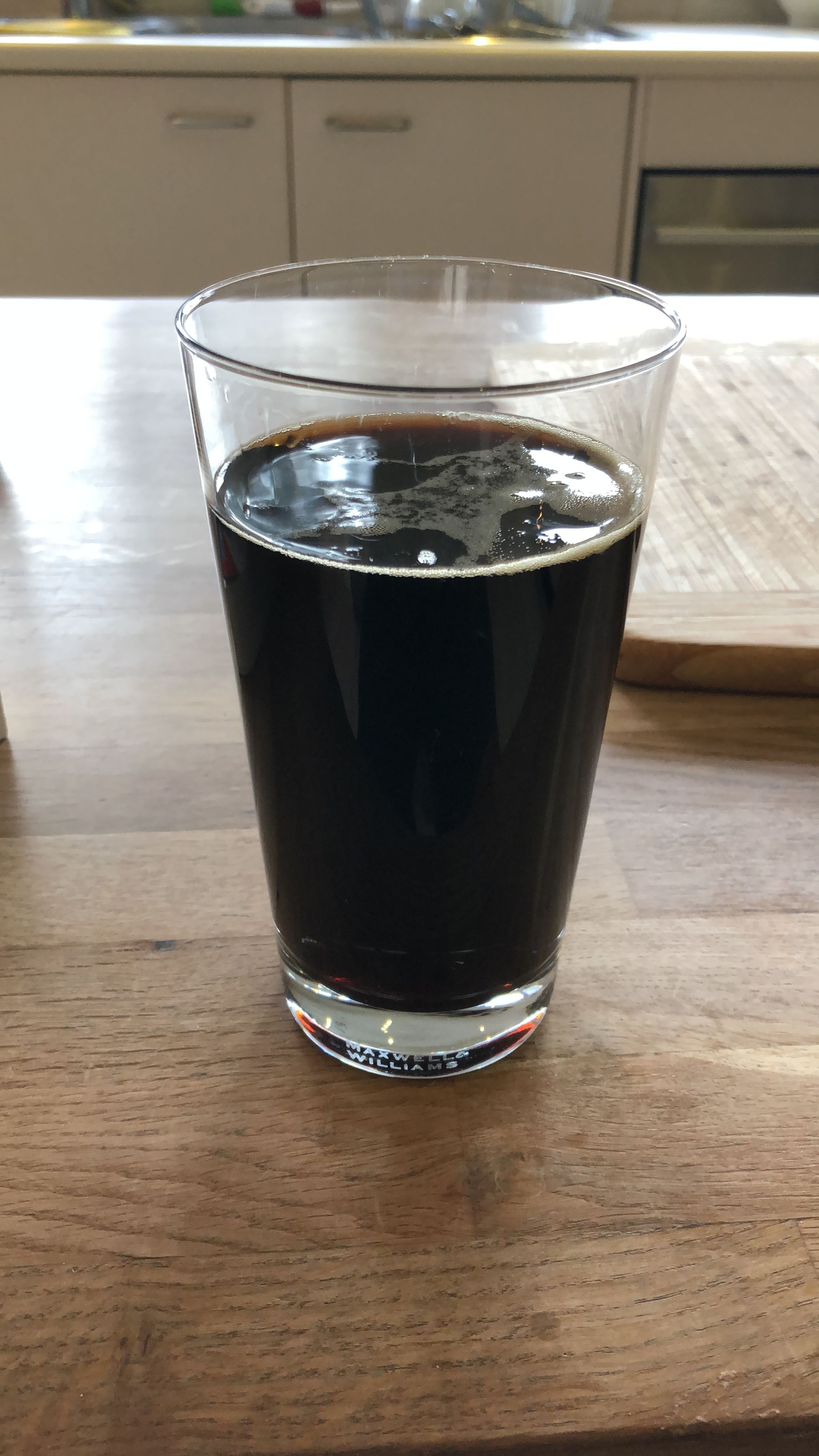Amber Ale closed transfer

I've been away, so I haven't written for over a week - but what a week! I picked up an awesome second hand chest freezer that will soon be converted to a keg freezer ("keezer") and I've already been drinking the homemade Pale Ale from an ice cold keg. Happy days!
I've acquired three kegs (so far), and there's space for 5, so I'm keen to get brewing again, but before I can do that, I need to empty the Fermentasaurus ("Fermus" from now on), which means my first closed transfer from Fermus to keg. Exciting times.
So, how does this work? The Fermus has the pressure kit attached. That means I can push gas in to increase the pressure to force the liquid out through the silicon tip tube that's attached to the beer post of the lid. The beer post is attached to the keg.
So long as the pressure in the keg is less than the pressure in the Fermus, the beer will flow from Fermus to keg.
Before I start, there's a couple of things to watch out for. Firstly, I don't want the pressure differential to be too great. This would cause the beer to move too quickly and foam up in the keg. This can lead to the foam pushing out through the gas post (and possibly into the pressure gauge/release valve), which is not a good thing.
So, before starting the transfer, I pump the pressure up in both to around 10PSI (~69KPa). The CO2 tank is connected to the Fermus and the regulator is closed at this time. The spunding valve is connected to the gas ("In") post of the keg.
Connecting the beer line from Fermus to keg equalises the small pressure differential. Now, I open the regulator on the CO2 tank and set it to 10PSI.
I slowly dial the spunding valve down, which reduces the pressure in the keg and the beer starts to flow. I set this to 8PSI (~56KPa) to start things off.

After about 30 seconds, something is wrong. The dip tube is pushing gas as well as beer and I realise the the end is not hanging under the float as it should be, but is trapped between the float and the wall of the Fermus.

I tried giving the side of the Fermus a bash to see if it would right itself, but no. I'm going to need to open everything up and stick a long spoon handle in to sort it out. So...after all this time working in a closed vessel, it turns out I'm going in anyway. Very annoying. But it works and the dip tube is now hanging where it should be.

I re-pressurise everything and the transfer is quickly back on track.

I started with around 22L and the keg can hold 19L, so I stop just short of 3L to prevent overfill.
And that's it...first Fermus to keg transfer complete.
But there's still 3 litres of beer left behind. What to do? I don't want to resort to bottom bottling, with all the trub that's still there. And the Fermus is still under pressure. I have a univeral-ball-post-to-barb thing that I use for cleaning that I could attach to the beer line I've just disconnected from the keg, but I don't want the beer just dropping out of that into the bottles (too much potential for oxygenation).
So instead, I use the bottle-filler pipe. This isn't a tight fit, so I thought it would be much messier, but it actually turned out to be less messy than the filler normally is. I didn't use the filler valve, but instead just popped the post-to-barb off the beer line as soon as the bottles were full.

I also put two of the sugar tablets I've used previously into each bottle for carbonation. I'm a little concerned that's too much as the beer has been under small pressure for a couple of weeks and probably has a bit of carbonation already. You could be looking at my first bottle bomb!
Anyway, the whole process was surprisingly painless - much less so than filling 30+ bottles, even with the problems I had. The total transfer took around 40 mins.
That's it! Another keg successfully filled. This has gone into the Keezer. Over the next couple of days I'll be adding a collar to the Keezer. This will allow me to pass a CO2 line from outside into the Keezer so I can start carbonating this beer.
Then I'll be adding a 4-port gas manifold and a tap (or two) so I can pour beer straight from the tap. Can't wait!!!




